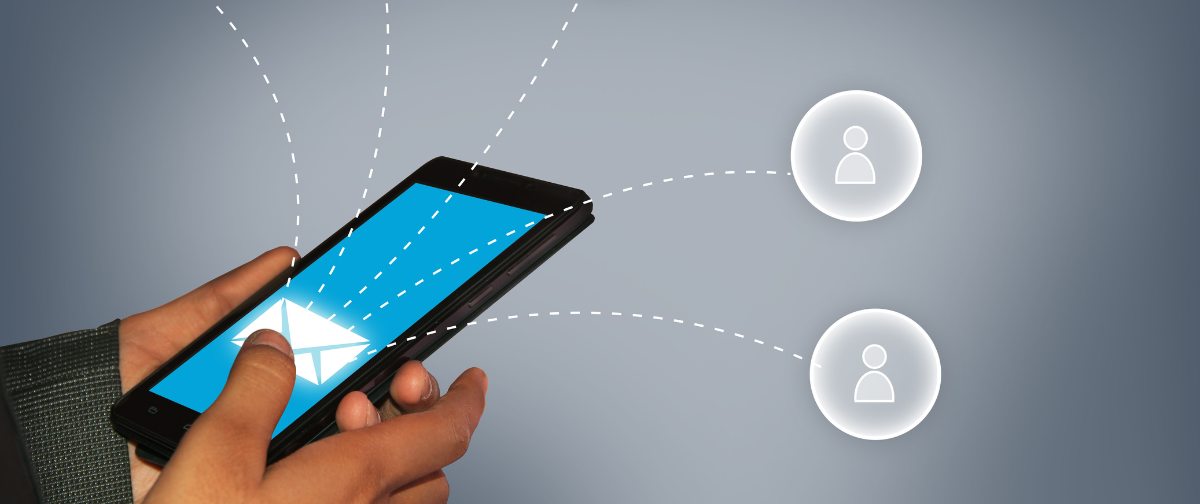Whether you’re counting the minutes until your break away, or can barely be torn from your beloved inbox, a holiday only really begins with one important email – the Out of Office.
A concise and effective Out of Office gives you the confidence to enjoy a real break from your device, knowing your clients and co-workers can be reassured their message has been received and will be replied to upon your return. Avoid a stressful return to the office and keep your work relationships in ship shape with an Out of Office that ticks all the boxes.
What is an Out of Office message?
Email platforms allow you to compose a message that is automatically sent to any recipient that emails you during a set period of time. You choose the dates the auto-responder should be sent and use the email to tell your clients the vital information – which doesn’t include your accommodation options and road trip of choice!
LinkedIn suggests three key components that make an email an effective Out of Office message:
- How long you are unavailable, including the exact dates
- Who to contact during your absence if necessary
- Your return date
Why is an Out of Office message important?
Indeed finds that an Out of Office is significant for maintaining relationships with your contacts, telling them why there will be a delay, and ensuring them that their email hasn’t just disappeared into an inbox abyss. That expectation of a fast response and solution needn’t disappear simply because you’re on a summer holiday.
Out-of-Office messages provide contacts with a professional explanation of your absence, whether it’s for a day, a week, or more.
Outpost suggests an Out of Office keeps your contacts and customers informed of your whereabouts, giving them some peace of mind that you have in fact received their message. An automated Out of Office can even decrease the number of unanswered emails you have awaiting you upon your return. During your leave period, contacts may send emails to your suggested co-worker instead if they need an immediate answer, meaning you don’t have to face a bombardment of messages that should have been seen to days ago. By pointing them in the right direction, you’re ensuring their needs are met in your absence.
What NOT to include in your Out of Office message:
Now you have an idea of the three main components to include, it’s equally important to know what’s best left out! Robert Half lays out exactly what to avoid when composing your Out of Office message:
- Giving too much holiday detail: don’t type out your entire getaway itinerary for your clients, no matter how much you may consider them friends. Leave that for the lunch catch-up when you’re back and simply note you’re on annual leave instead.
- Trying to be funny: While a friendly tone is great, not all jokes land with everyone the way you intend them to, so best to take them with you on holiday. Resist making jokes in your message so you don’t give the wrong impression, and don’t forget you’re representing your company too!
- Promising an immediate response from a co-worker, or from yourself upon your return: You have no control over how quickly your listed co-worker can respond during your absence, so don’t give your contacts a concrete response time. Make sure you’ve asked your co-worker’s permission before listing their email in your Out of Office, ensuring they have the capacity to take on your clients too. The same goes for promising your own immediate response upon your return. Your inbox may be fuller than you predicted, making your response time longer – so don’t give an exact time frame that you can’t stick to. Instead, opt for an “as soon as possible” time frame.
- Typos: An Out of Office is sent to anyone who emails you – whether a client or manager – so represent yourself in the best way you can. Read and re-read your message to avoid an embarrassing mistake. A common one is also misspelling the alternative contact address, causing even more mess when you return. We repeat, read and re-read!
Some examples:
Mailbird created an example that’s straightforward and basic to avoid any missteps. Sometimes there’s not enough time to get crazy creative, and that is OK! As long as those three basics are there (how long you’re gone, when you’ll return, alternative contact), it’ll do the trick. Try something like:
Hi there,
Thanks for your email.
I’ll be out of the office from dd/mm/yyyy and returning on dd/mm/yyyy. If you require a response during that time, please email name@company.com
Otherwise I will get back to you as soon as possible upon my return.
Regards
If your company has social media sites, a newsletter subscription service, a website or frequently used webpages that often help the people emailing you, an Out of Office message is a perfect place to put them, directing your contacts to the answers in your absence. It can also help with driving traffic to your website – a win-win!
Hi there,
Thanks so much for emailing!
I am out of the office from dd/mm/yyyy and returning on dd/mm/yyyy. I’ll be responding to emails as soon as possible upon my return, but if you require a response while I’m away, please email name@company.com for some assistance.
If you’re reaching out about [SERVICE/PROMOTION] check out our Services page (hyperlinked) for more info or subscribe to our newsletter here (hyperlinked) to stay updated.
Keep up with what’s going on at COMPANY by liking us on Facebook (hyperlinked).
Cheers
You may be setting up a few Out of Office messages, either for internal or external email addresses. For internal contacts, you don’t necessarily need to include a particular email address, but you may be able to provide details about a familiar project, a location in the office, and a co-worker to chat to if there are any issues. You may even want to use a more informal tone depending on your company’s culture. If you need some guidance for what to say when it comes to your own co-workers, here’s a handy internal example:
Hi!
I’m out of the office on annual leave until dd/mm/yyyy and will be responding to emails when I get back.
If you’re looking for updates or info on the upcoming XXX project, I’ve created a shared doc here (hyperlinked) for you to check out, or stop by Stephen’s desk for more info.
If you need something urgently, contact Claire and she’ll be able to help you out.
Looking forward to catching up again on dd/mm/yyyy.
Cheers
An Out of Office message isn’t just a must-do office rule, it’s answering questions, maintaining relationships, and allowing you precious time off work without worrying about your inbox. Feel confident stepping away from your desk knowing your inbox isn’t causing issues for your return. A properly crafted Out of Office is a help, not a hindrance, so perfect yours with our handy hints and enjoy that much-needed holiday!






